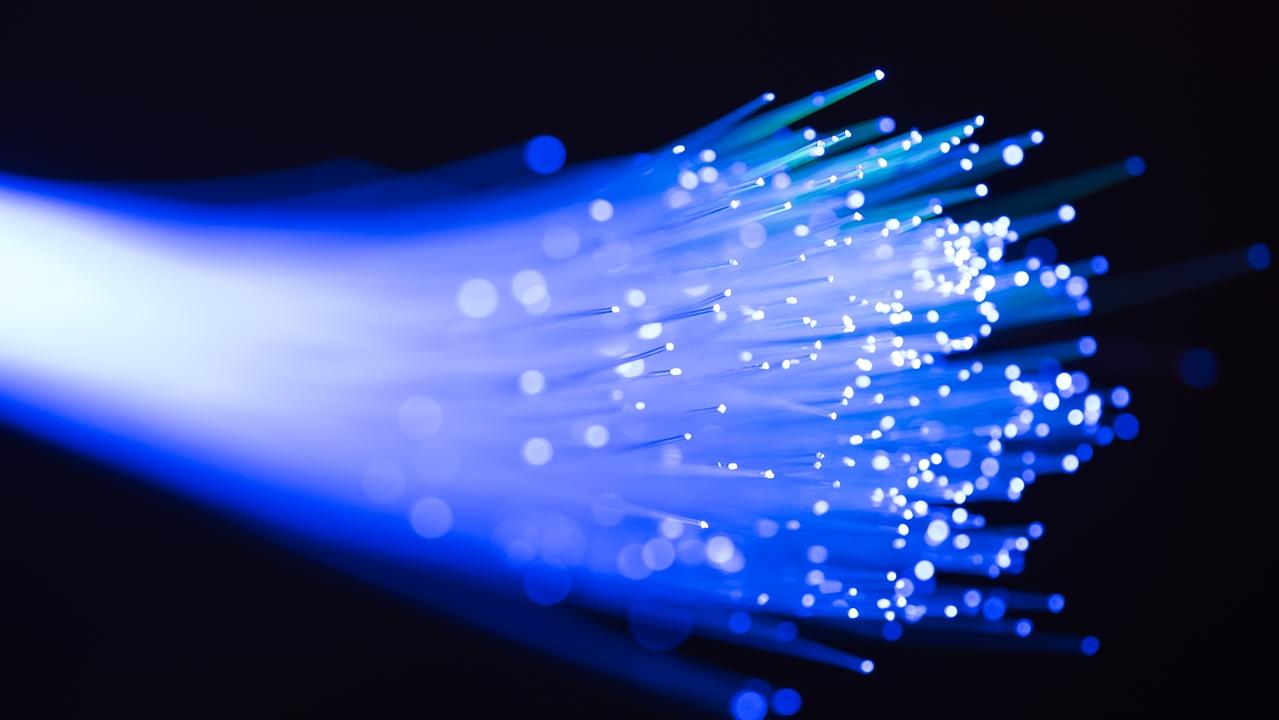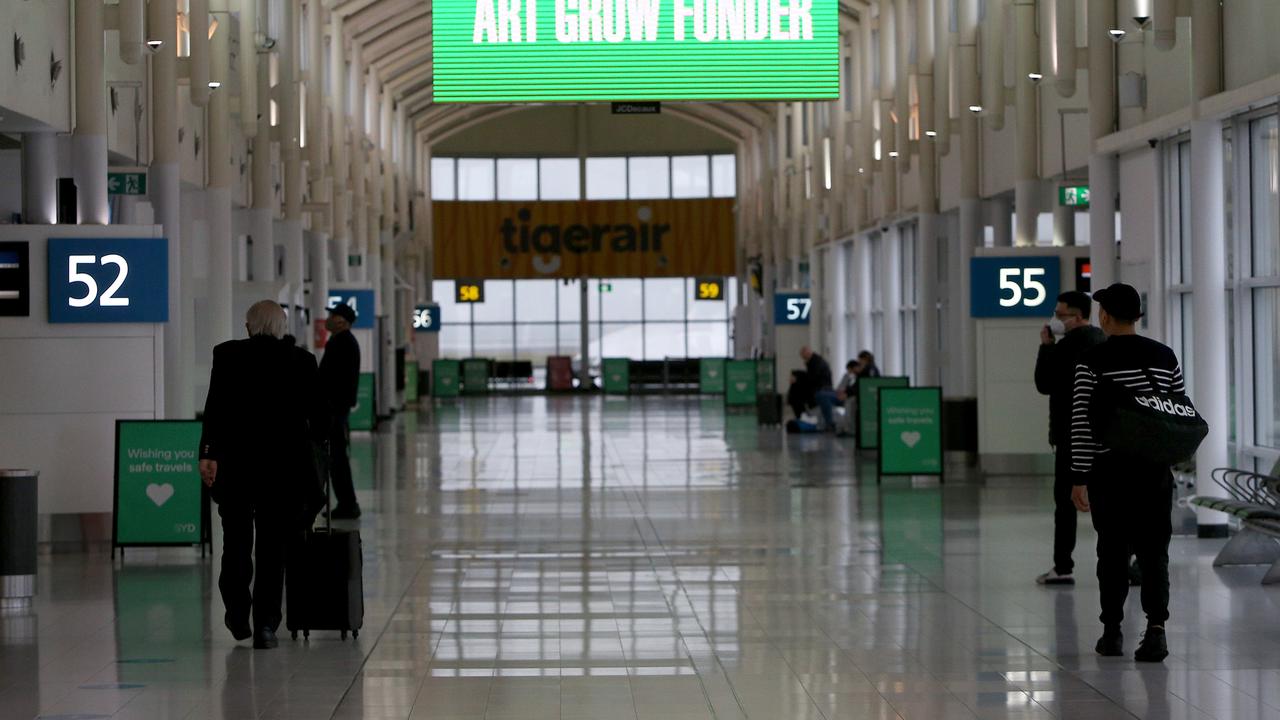Donald Trump effect: Real versus fake
BEWARE — or take advantage — of the fake Trump effect. It’s the real that matters, writes Terry McCrann.

Terry McCrann
Don't miss out on the headlines from Terry McCrann. Followed categories will be added to My News.
BEWARE — or take advantage — of the fake Trump effect. It’s the real that matters.
That’s the biggest lesson from yesterday’s share market blip, purportedly triggered by US president Donald Trump’s temporary and very limited visa freeze.
For, as his press secretary, Sean Spicer, noted yesterday: some 325,000 foreigners entered the US the day before, the freeze impacted on just 109.
Two broad reasons were proffered to explain the fall in the Australian market yesterday — the purported negative impact on confidence of the visa move, and the weak US GDP numbers for the December quarter.
The second wouldn’t have made any sense. To the extent that the US economy remains — or merely looks — weak, that would work to delay exactly the sort of interest rates hikes from Fed head Janet “the blinker” Yellen that might tend to undermine the Trump-driven global share market surge.
In a rational world, not consumed by Trump hysteria which is going to make BDS — Bush Derangement Syndrome — look like a mild dose of rational scepticism in comparison, the visa move wouldn’t have either.
But to the extent that it did, it became the first working case of the fake Trump effect — people, in this case, investors, making real world decisions on the basis of a mirage, of a Trump impact which didn’t actually exist even in virtual reality and certainly not in plain reality.
There are going to be many, many more cases. So beware of being sucked into joining a stampede up a blind alley at potentially serious cost.
Or alternatively for the canny and the quick, take advantage like some did yesterday of a buying opportunity, as the real and more sustained Trump effect kicks back in.
It was unclear yesterday whether Australian investors were exercising their own discrete judgment to be stupid, or were merely reacting to the negative tone of futures trading for Wall Street ahead of its Monday night return for the week.
It was a negative tone, in any event, which was fading towards the end of our trading and into the evening.
As I’ve been trying to explain, the real Trump effect is going to be very powerful and sustained for at least a considerable part of 2017. But you also need to think critically and pre-emptively of the after Trump-effect period.
The reality of the building Trump effect should have been blindingly obvious given what’s happened in markets since the reality of a President Trump became indisputable, around midday November 9 down under.
That is, unless like our Prime Minister Malcolm Turnbull, you’ve slept through those 11 or so weeks dreaming of the President Hillary he so wistfully desired.
The first wave of the Trump effect has been to dramatically boost both business and consumer confidence in the US; this has been captured most vividly by and will further feed off the double digit, multi-trillion-dollar rise in the US share market.
The second, much bigger, much broader and more sustained real Trump-effect wave will kick in both when the administration, either through executive order or with Congress and legislation, delivers real change, and the confidence boost feeds into real business and consumer spending increases.
That change over varied timeframes will include lower corporate tax rates (but not, all the way to 15 per cent), increased spending on infrastructure, and a dramatic increase in US oil and gas (mostly shale) investment and production.
The tricky bit for investors should be not to avoid jumping at fake Trump-effect shadows, but to not get too carried away by the real Trump effect, either in terms of its extent or its timing.
That’s to say, it will end. It could end badly. It almost certainly will end suddenly — both in terms of its own contradictions, but also because of the inevitable blowbacks.
And the fact, so far as global share markets are concerned, we are starting at very high equity values, thanks to zero interest rates almost globally.
THAT points to the most critical of the inevitable negative blowback from the Trump-effect surge: US interest rates rising too quickly or — more certainly, and — the US dollar as well.
Right now the confidence impact is so powerful, investors in both the US equity and, albeit a little less single-mindedly, bond markets are all but oblivious to the risk of US rate rises. So you’ve got an attractive if dangerous mindset.
Unlike 2016, investors “don’t care” if Yellen starts to hike. Indeed if she does, it will actually feed positively into confidence.
Equally though, if she continues to blink at critical points, the price effect of cheap money will also be positive for equity (and property) and bond markets. Rising rates or not, both are positive.
Until, as surely as night follows day (literally, by the by, in our trading day), suddenly it isn’t.
Either higher rates will blow things up in a dramatically over-leveraged world. Or lower rates will because of an even bigger (than now) asset value bubble.
Bottom line: don’t let yourself be swayed to join the hysterical (media and intellectual elite) mob.
Even more importantly, don’t take your eye off the real Trump effect, both as its plays out and ultimately ends.
SCIENTISTS, DOOMSDAY AND MORONS
A BUNCH of scientists have — utterly if also pompously unknowingly in their sheer unbounded stupidity — destroyed any claim to credibility of the entire scientific community worldwide.
They have done so via the childish and very musty mechanism of their so-called “Doomsday Clock”. Last week they moved — the word “pretentiously” doesn’t begin to capture how ostentatiously disconnected from any substance the move was — the Clock to “two and half minutes to midnight”.
This marked, as the mindlessly hysterical media acolytes described it: “the closest point humanity has been to extinction since the first hydrogen bomb test in 1953”.
The Clock is an artefact of the so-called Bulletin of Atomic Scientists.
The minute hand was moved 30 sec, with theatrical flourish by two suitably sombre-faced “scientists” to an audience of slavering media morons.
The reason? You should have guessed it: another fake Trump effect: “he would make matters worse … because of a mistaken belief that the threats posed by nuclear weapons and climate (change) can be ignored.”
Now the Clock might have had a “marketing use” when it was dreamt up back in 1947. But what has it to do with science? What is the “scientific basis” of the 30 sec?
Was it even based on the appropriate computer modelling?
At least then, just like so-called “climate science” the “garbage out” would have been based on peer-reviewed “garbage in”.
It might have seemed like a “good idea at the time” in 1947, actually to the wife of a physicist who was herself a “landscape engineer”, one Martyl Langsdorf.
But it doesn’t withstand even the most cursory analysis for logic or substance. Particularly, as it’s been a stopped clock for 69 years.
Most deliciously and without the slightest sense of self-awareness, as one of the “scientists” noted: it had become a cultural touchstone “used by religious cults for end-of-days prophecies”. Exactly: so-called “climate science” is really a religious cult making …
Originally published as Donald Trump effect: Real versus fake


